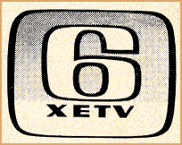
From a transmitter in Mexico came ABC programming.
Thursday, September 5, 2002
Page 22
REMINISCING (Column)
On a Clear Day, You Can See San Diego
By ROGER M. GRACE
Nowadays, viewers in L.A. think nothing of being able to watch programs on cable emanating from Chicago’s WGN or Atlanta’s WTBS — or, if they’re hooked up to a satellite dish, from a myriad of channels around the globe. I remember back in the early 1950s (when the thought of picking up signals from such faraway stations was unimaginable) how it was a kick to pull in clear pictures from San Diego, 116 miles away, on those days when atmospheric conditions were right.
Not many years before that, it was a source of excitement for television experimenters to receive signals from but a few blocks away.
If you tried right now to tune in a San Diego VHF station using your antenna (if you still have one), you wouldn’t succeed. But in the 1950s, there were not so many stations in California and far fewer high buildings. San Diego transmissions reached us, though the picture was often marred with static.
I recall one Thursday night when, as a youngster, I was watching "The Lone Ranger" with my mother on Channel 7. Shortly after the show started at 7:30, the signal waned, and then could barely be pulled in. Switching to San Diego’s Channel 8, the picture was crisp, though the quality soon diminished. We reverted to Channel 7 — which in those days was KECA — during Channel 8’s commercial break at 7:45 p.m. (It had to have been 7:45; there was a commercial interruption in those days during half-hour shows only after the opening, at the midway point, and before the closing credits.)
What had occurred, from a technical standpoint, was a mystery to us.
In retrospect (with the aid of Internet research), it now makes sense. There is a propensity for interference between stations that are contiguous on the dial — except between channels 4 and 5 which can be assigned in the same broadcast area. The broadest possible VHF allocation for a city is channels 2-4-5-7-9-11-13, the assignment here. But even with intervals between stations on the dial, interference from channels in nearby regions loomed as a concern.
On that particular night right around 50 years ago when Channel 7’s signal waned in Los Angeles, that of KFMB-TV, Channel 8, in San Diego necessarily was intensified here based simply on lack of competition.
Of course, the reception was two-way. Sets in San Diego could pull in Los Angeles stations.
I’ve learned that even before San Diego’s first station, KFMB-TV, went on the air on May 16, 1949, sets were being sold in that burgh for viewing L.A.’s Channel 2 (then KTSL) and Channel 5 (KTLA).
When KFMB-TV was San Diego’s lone station, it beamed programs from each of the four networks, ABC, CBS, NBC, and Du Mont.
On April 14, 1952, the FCC lifted a ban
it had self-imposed Sept. 30, 1948 on the licensing of new stations. (Faced
with a glut of applications, the idea was to give itself time to concoct a
master plan for allocations; it wanted, in particular, to take a look at signal
interference, rival color systems, and the feasibility of increased usage of
the UHF band). With the green light to new channels, KFSD-TV, Channel 10, took
birth as San Diego’s NBC station on Sept. 13, 1953. KFMB became the CBS
outlet, while including some ABC programming.
|
|
From a transmitter in Mexico came ABC programming. |
|
In 1956, the FCC granted the American Broadcasting Companies a permit “to transmit its network programming to XETV, Channel 6, Tijuana, Mexico, for broadcast to San Diego, California.” XETV had gone on the air, as an independent station, in 1953. With a boost in power to 100,000 watts in 1956, its signal could be pulled in here, on some days.
San Diego radio stations could also be picked up here. Sort of. On Saturday mornings, kids in L.A. could hear Howdy Doody’s radio show on KFI, our local NBC outlet, from 9:30-10. The problem was that the entire broadcast was an hour. To hear the first half hour, it was necessary to tune in San Diego’s NBC station, and listen real hard.
On May 6, 1961, L.A. gained a 24-hour-a-day, all-news radio station, headquartered in the “shimmering Lee Tower” on Wilshire Boulevard, near La Brea. Though aimed at the L.A. market, the station was based in Mexico where its transmitter emitted signals at 100,000 watts, twice the power authorized for any U.S. station. The only indication of its situs came during station identification. A pleasant female voice would say something that sounded like “ekes a teh airy ah,” followed by “Tijuana, Mexico.” One would eventually catch on that the seeming gibberish was a recitation, in Spanish, of the station’s call letters, XETRA.
Its product was marketed as XTRA (pronounced “extra”) News. You could tune it in any time and hear the announcer read the latest wire service copy. Then KNX and KFWB switched to all-news formats in 1968, and “XTRA News” was supplanted by “XTRA Music.” It’s now a sports station, aimed at the San Diego market.
Copyright 2002, Metropolitan News Company
MetNews Main Page Reminiscing Columns